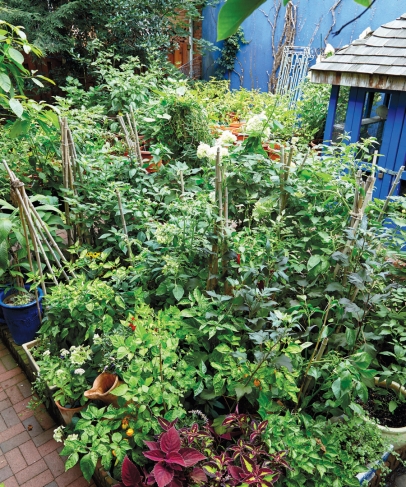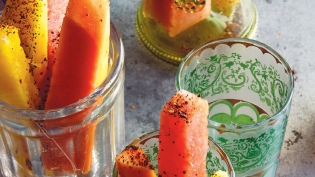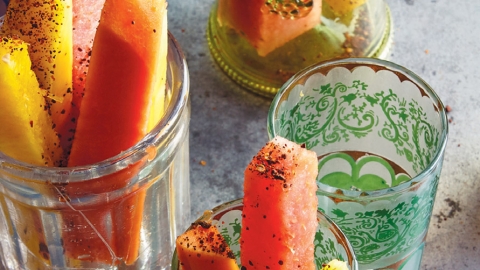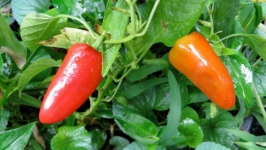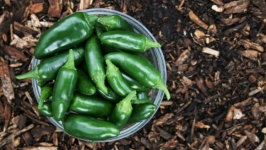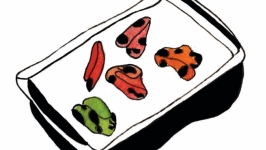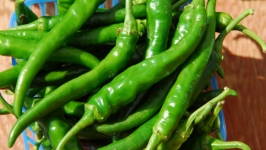Capturing the Heat
Blame a fierce New Jersey storm, which felled a tree in Weehawken. Suddenly, Maricel Presilla’s garden, once a shady respite, was bathed in sunlight. Thus Presilla began to grow peppers.
Today, more than 600 varieties grow in that garden in Weehawken, which is now a vibrant edible wonderland. “It’s overrun by peppers, absolutely. But it’s so pretty.
“Thank God I love peppers.”
Peppers of the Americas (Lorena Jones Books), released last month, is certainly not as thick as Presilla’s Gran Cocina Latina (W. W. Norton & Company, 2012), a decades-long passion project that was hailed as a peerless encyclopedic treasure of the culinary traditions of Latin America. But the author’s approach remains the same. Peppers of the Americas is also a passion project, and features a devout attention to detail alongside engaging illustrations and seductive photographs. Presilla’s goal is to bring to light the incredible role that peppers have played in global cuisine, a flavor element since time immemorial.
The photographs are their own story. Photographer Romulo Yanes, a former food photographer for Gourmet magazine, was set to do the work for the book. That he lived nearby, in Paterson, was a relief to Presilla. Yanes could just come to the house. But then other work took him to San Francisco, and Presilla found herself sorting and packing peppers for shipment west. “I had no idea what I was getting myself into.” Finding the perfect pepper to photograph is one thing, but it’s another thing entirely to ensure that it remains properly nurtured and labeled and packaged for travel (using wet paper towels, Ziploc bags, Styrofoam coolers and dry ice). Add in, for amusement, a mischievous dog.
As for the food photographs, which are rustic, engaging and vivid, Presilla was equally exacting. Each dish was cooked by her own hand, and each prop, utensil and well-loved wooden tabletop is from her home.
Peppers have long been the star of Latin American cuisine. But many don’t realize that it was the Americas that gave the world the gift of peppers; a revolution began when Columbus transported them on his return voyage. “What would Korean food be without peppers?” Or Italian food. Can you imagine Italian cuisine without pepperoncini or roasted red peppers?
Presilla so loves peppers that when she was a guest chef at the White House for President Obama, she insisted that the decorations be pepper plants, not flowers, and she incorporated into the display a few peppers from the First Lady’s garden. “Can you think of anyone using hot peppers as a decoration in the White House? I don’t think so.”
As pretty as her garden may be—and this year it features more peppers than ever—the plants are not simply ornamental. Presilla cooks daily with peppers. She gives peppers to her goddaughters, who live nearby, and to friends. She freezes and dehydrates them. And they are showcased on the menus of her restaurants, Chucharamama and Zafra, both in Hoboken.
It’s a good moment for peppers, says Presilla, especially here in the States. Americans are eating more hot peppers than any other populace in the world, and are at the forefront of pepper research. (Which means another challenge to whichever pepper holds the title of “hottest ever.”)
“Americans are in love with hot peppers.”

Chile huacle negro, from the same species (C. Annuum) as the
poblano and the ancho. Illustration by Julio J. Figueroa.


